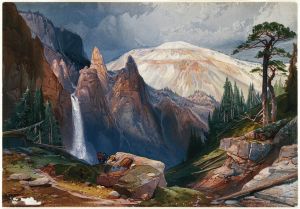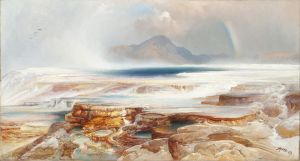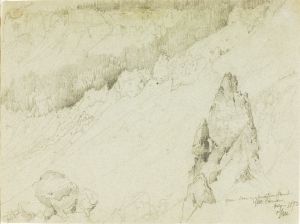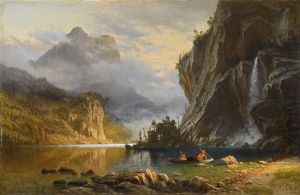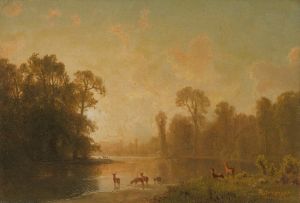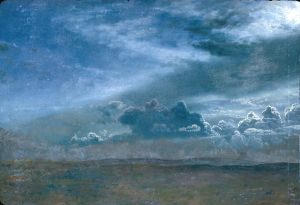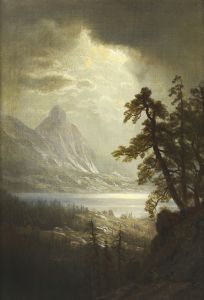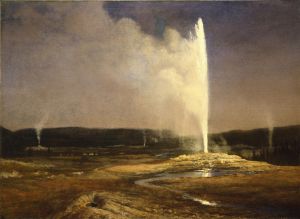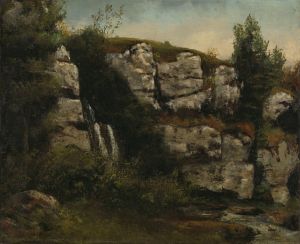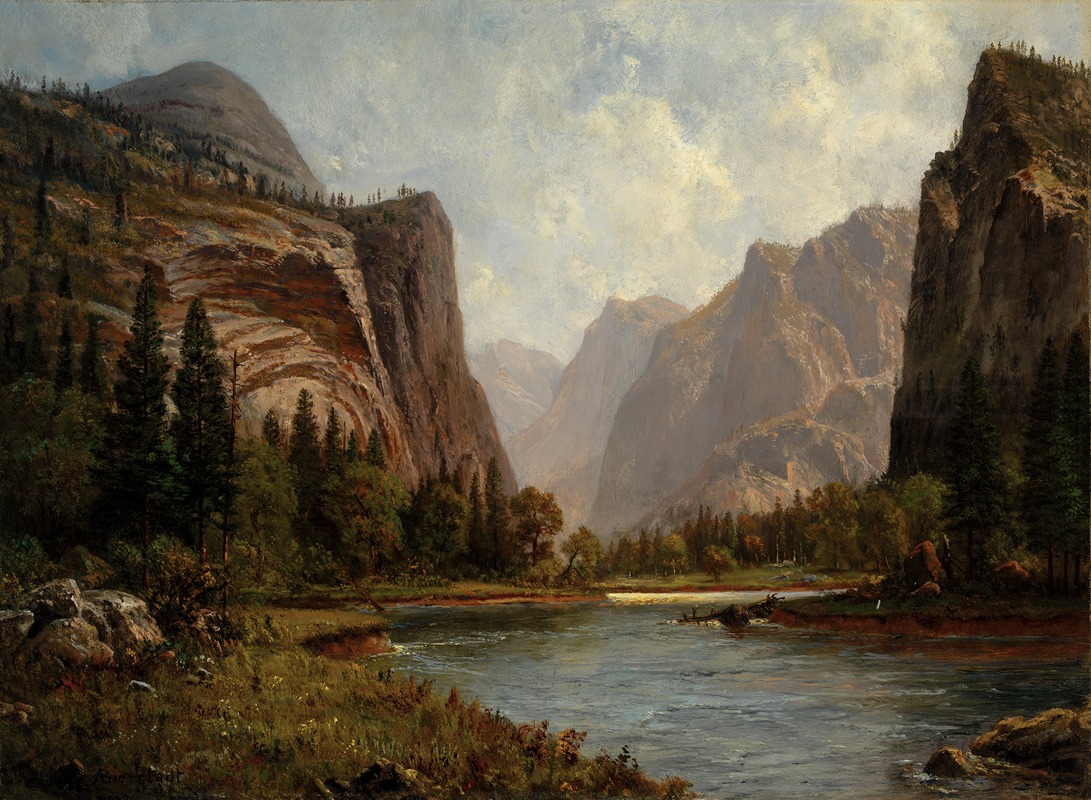
Gates of the Yosemite
A hand-painted replica of Albert Bierstadt’s masterpiece Gates of the Yosemite, meticulously crafted by professional artists to capture the true essence of the original. Each piece is created with museum-quality canvas and rare mineral pigments, carefully painted by experienced artists with delicate brushstrokes and rich, layered colors to perfectly recreate the texture of the original artwork. Unlike machine-printed reproductions, this hand-painted version brings the painting to life, infused with the artist’s emotions and skill in every stroke. Whether for personal collection or home decoration, it instantly elevates the artistic atmosphere of any space.
Albert Bierstadt's "Gates of the Yosemite" is a notable work by the German-American painter renowned for his large landscapes of the American West. Created in 1882, this painting is a prime example of Bierstadt's ability to capture the grandeur and majesty of the natural world, particularly the breathtaking vistas of Yosemite Valley. Bierstadt was part of the Hudson River School, a mid-19th century American art movement embodied by a group of landscape painters whose aesthetic vision was influenced by romanticism.
The painting depicts the iconic view of Yosemite Valley, framed by the towering granite cliffs that form its "gates." Bierstadt's work is characterized by its dramatic use of light and shadow, which is evident in this painting. The artist's technique involved the use of luminism, a style that emphasizes the effects of light on the landscape, creating a sense of depth and realism. This approach is particularly effective in "Gates of the Yosemite," where the interplay of sunlight and shadow enhances the imposing presence of the valley's natural features.
Bierstadt's journey to the American West began in the 1850s, and he made several trips to Yosemite Valley, which became a recurring subject in his work. His paintings played a significant role in shaping public perceptions of the American West during a time when the region was largely unknown to the eastern United States and Europe. Through his art, Bierstadt introduced audiences to the awe-inspiring beauty of places like Yosemite, contributing to the growing interest in westward expansion and the conservation of natural landscapes.
"Gates of the Yosemite" is a testament to Bierstadt's meticulous attention to detail and his ability to convey the sublime beauty of the American wilderness. The painting captures the essence of Yosemite's dramatic scenery, with its towering cliffs, lush greenery, and expansive sky. Bierstadt's use of color and composition invites viewers to experience the majesty of the landscape as if they were standing at the valley's entrance themselves.
Throughout his career, Bierstadt's works were celebrated for their technical skill and their ability to evoke a sense of wonder and exploration. His paintings were exhibited widely and were instrumental in promoting the idea of preserving America's natural wonders. Bierstadt's depictions of Yosemite and other western landscapes helped inspire the establishment of national parks and the conservation movement in the United States.
Today, "Gates of the Yosemite" remains an important piece of American art history, reflecting both the natural beauty of the Yosemite Valley and the cultural significance of Bierstadt's work in the broader context of 19th-century American art. The painting continues to be appreciated for its artistic merit and its role in highlighting the importance of preserving the natural world for future generations.






